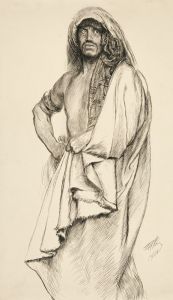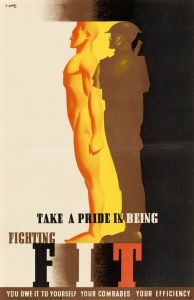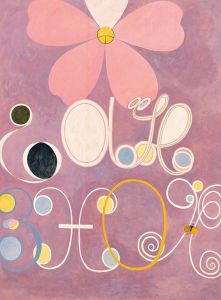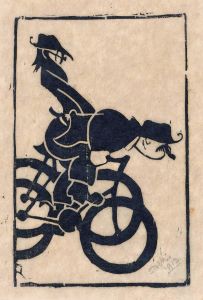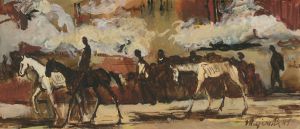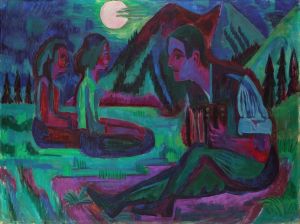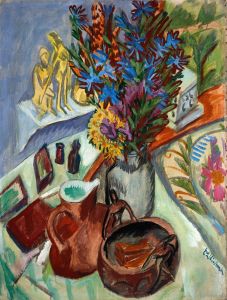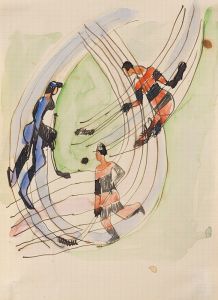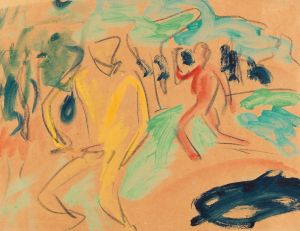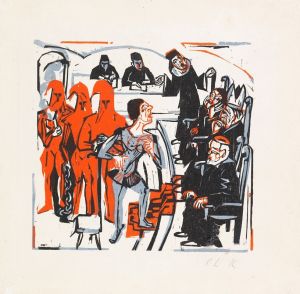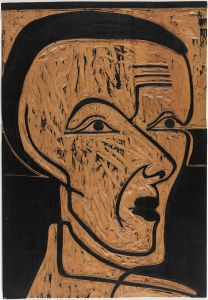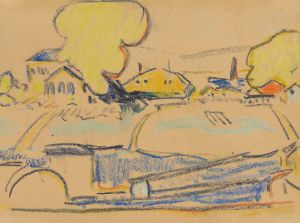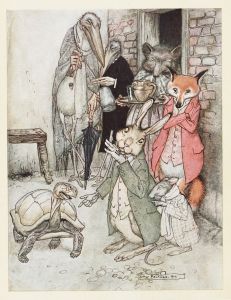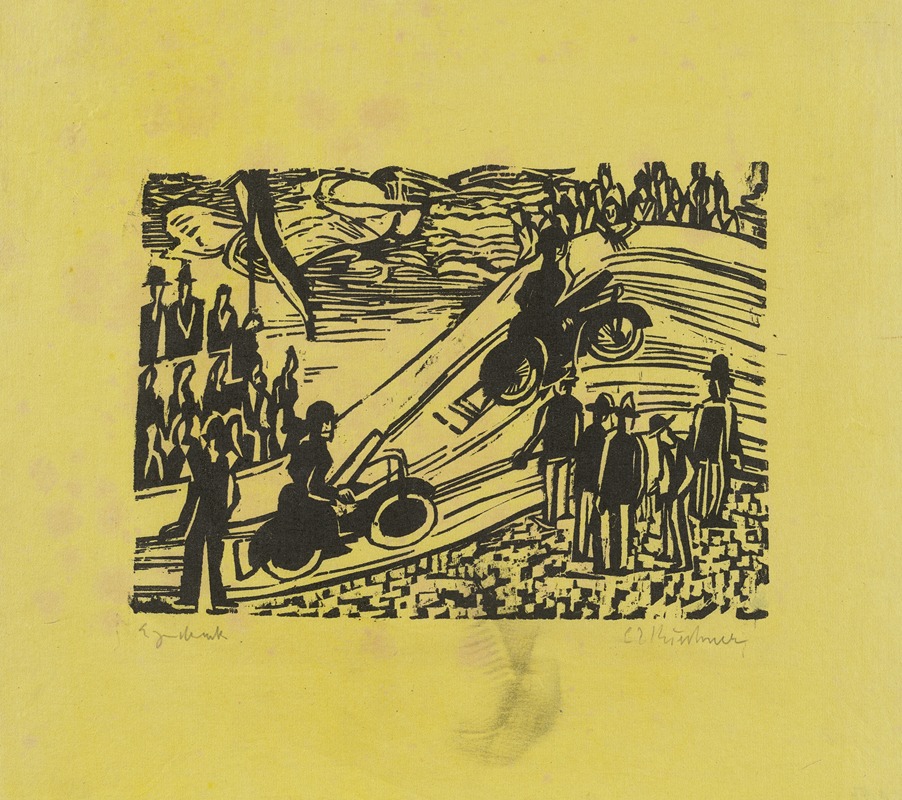
Radrennen
A hand-painted replica of Ernst Ludwig Kirchner’s masterpiece Radrennen, meticulously crafted by professional artists to capture the true essence of the original. Each piece is created with museum-quality canvas and rare mineral pigments, carefully painted by experienced artists with delicate brushstrokes and rich, layered colors to perfectly recreate the texture of the original artwork. Unlike machine-printed reproductions, this hand-painted version brings the painting to life, infused with the artist’s emotions and skill in every stroke. Whether for personal collection or home decoration, it instantly elevates the artistic atmosphere of any space.
Ernst Ludwig Kirchner, a prominent German expressionist painter and one of the founding members of the influential artist group Die Brücke, created the painting "Radrennen" (translated as "Bicycle Race") in 1912. This painting is a quintessential example of Kirchner's dynamic style and his interest in capturing the energy and movement of modern life.
Kirchner was deeply influenced by the rapid changes occurring in early 20th-century Germany, particularly the urbanization and industrialization that were transforming society. His work often reflects the vibrancy and chaos of city life, and "Radrennen" is no exception. The painting depicts a bicycle race, a popular and modern form of entertainment at the time, which also symbolizes the speed and progress of the era.
In "Radrennen," Kirchner employs bold colors and dynamic compositions to convey the excitement and motion of the race. The painting is characterized by its use of vivid, non-naturalistic colors and distorted forms, typical of the expressionist movement. Kirchner's brushwork is energetic and loose, capturing the frenetic pace of the cyclists as they speed through the scene. The figures are elongated and angular, a stylistic choice that emphasizes movement and the physical exertion of the racers.
The background of the painting is equally dynamic, with abstracted forms and vibrant colors that suggest a bustling urban environment. This setting reflects Kirchner's fascination with the modern city and its impact on human experience. The painting's composition draws the viewer's eye across the canvas, mimicking the swift motion of the race and creating a sense of immediacy and engagement.
Kirchner's work, including "Radrennen," was part of a broader movement within Die Brücke to break away from traditional artistic conventions and explore new ways of expressing the human condition. The group sought to create art that was raw, emotional, and reflective of contemporary life. Kirchner, in particular, was interested in exploring themes of alienation and the psychological impact of modernity, which are subtly present in the tension and intensity of "Radrennen."
Throughout his career, Kirchner faced numerous challenges, including the trauma of World War I and the subsequent political and social upheavals in Germany. Despite these difficulties, he continued to produce art that was innovative and influential. His work, including "Radrennen," has had a lasting impact on the development of modern art, influencing subsequent generations of artists.
Today, Kirchner is recognized as one of the leading figures of German expressionism, and his paintings are celebrated for their boldness and emotional depth. "Radrennen" remains an important work within his oeuvre, exemplifying his ability to capture the spirit of his time through a unique and powerful visual language. The painting is held in high regard and continues to be studied and appreciated for its artistic and historical significance.





